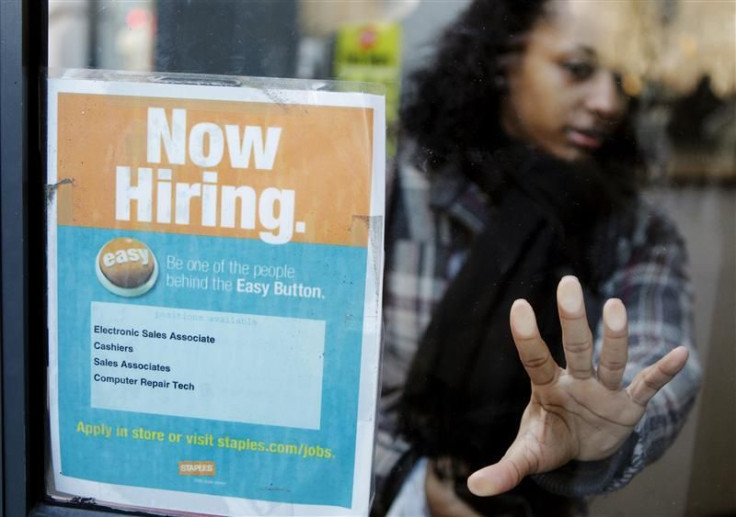Job Cuts in 2011 Up 14% on Heavy Government, Banking Layoffs

The number of planned job cuts at U.S. firms declined in December to the lowest level since June, but they were up from the same time a year ago, a report on Thursday showed.
Employers announced 41,785 planned job cuts last month, down 1.6 percent from 42,474 job cuts in November, according to consulting firm Challenger, Gray & Christmas Inc.
However, last month's figure was up 31 percent from December 2010, when employers announced 32,004 job cuts, which still stands as the lowest monthly total since June 2000.
Total job cuts in 2011 of 606,082 were 14 percent higher than a year ago, but still well below the recession peak of 1288,030 annual job cuts reached in 2009.
Government and financial sectors dominated the 2011 job cuts. These two alone accounted for 41 percent of all the job cuts announced last year. The 183,064 government job cuts represent a record high for the sector and while the financial sector did not come close to its record high, annual cuts for the sector were up 165 percent from 2010.
Last month, Citigroup Inc. said the bank will eliminate 4,500 jobs, followed by Morgan Stanley announcing its plan to cut 1,600 jobs globally.
Unfortunately, these sectors are likely to continue to struggle in 2012, John Challenger, chief executive officer of Challenger, Gray & Christmas, wrote in the report. Washington is under immense pressure to cut spending and it looks like every deal to extend tax cuts, raise the debt ceiling and pass the budget will come with measures to cut spending, which can be expected to result in more job cuts.
Additionally, there are still proposals to make massive cutbacks within the United States Postal Service.
Involuntary layoffs at the Post Office could total as much as 120,000, according to one plan, with another 120,000 positions lost through attrition, Challenger said.
In the financial sector, the economic troubles in Europe will continue to be a cloud hanging over Wall Street in 2012.
While temporary fixes have been put in the place for the time being, there is still heavy risk of a collapse, which would ripple quickly through the global banking system. On the home front, many banks are still saddled with millions of foreclosed properties worth a fraction of their original values, Challenger added.
The government and financial sectors were not the only areas to see increased job cuts.
Continued weakness in consumer spending helped contribute to a 32 percent increase in retail job cuts, which totaled 50,946 in 2011, up from 38,751 in 2010. Aerospace and defense contractors felt the fallout from government cutbacks. These employers announced 34,759 job cuts last year, an 82 percent increase from 19,150 the previous year.
Challenger expects job creation to remain slow and steady in 2012.
In the end, it really comes down to demand and, right now, consumers and businesses around the world simply are not spending. So, there is little demand and, therefore, no compelling reason to ramp up hiring, Challenger said.
Private Hiring Surges
A separate report based on payrolls showed that the U.S. private sector added more jobs than forecast in December.
The 325,000 increase was the highest in records since December 2010 and topped Bloomberg consensus of 160,000.
Employment in the service-providing sector rose 273,000 in December, which is up from an increase of 176,000 in November. Employment in the goods-producing sector increased 52,000 in December, while manufacturing employment increased 22,000.
The financial services sector saw a decline of 1,000.
Small businesses -- those with less than 50 workers -- created 148,000 jobs, which made them bigger contributors to the country's labor market than larger businesses.
The consensus for the Friday official report from the Labor Department is for private sector job growth to accelerate to 170,000 with the public sector again expected to drop 20,000 employees thus bringing the total to 150,000.
The unemployment rate, which is included in the same report as the job creation numbers, dropped sharply in November to 8.6 percent from 9 percent. However, that number is partly a result of a lower labor participation rate. Economists are looking for the December unemployment rate to tick up to 8.7 percent.
Released one day ahead of the official report, Gallup finds U.S. unemployment holding at 8.5 percent in December, while underemployment remained virtually flat at 18.2 percent, with 9.7 percent working part time but seeking full-time jobs.
© Copyright IBTimes 2024. All rights reserved.





















